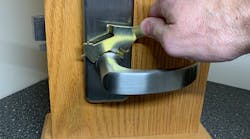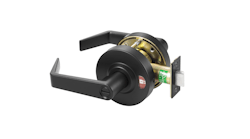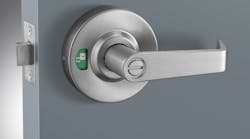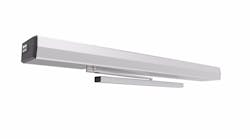One procedure locksmiths can still call their own is the ability to master key systems. Developing formulas and pinning groups of locks into systematic keying arrangements sets us apart from simple key duplicators.
Jerry Finch has written several instructional books on the subject of master keying. His first book began by a gentle warning that as a master system becomes more complex, it may also become less secure. Finch said that security was diminished because the addition of master chips allows a large variety of key cuts to operate a cylinder even if only two or three different key cuts are actually being used.
Someone from AT&T Labs has now published a different caseagainst master keying. AT&T describes a method of determiningthe top master key (TMK) for a system even if someone possesses just one change key long enough to decode the cuts. This method does not require disassembly of a cylinder. A criminal could easily pass by a door occasionally and try different key cuts until the master key cuts are found. One key blank would generally be required for each pin chamber in the system.HOW IT WORKSMost commercial domestic lock manufacturers use a 10-depth system of cuts. Single-cut master chips are too thin to function well, so master key charts are figured on two-step progressions. In any given chamber, cut depths of either 1,3,5,7,9 or 0,2,4,6,8 are used. If just one change key can be decoded, it will provide the odd-even cut arrangement, eliminate one trial cut possibility in each space and provide operating cuts for the testing procedure.Example:One change key is decoded to have cuts of 35241. A trial key is cut 15241 (all cuts same as the change key except in the first space). This trial key is tried in the same lock operated by the known change key. If the first space of the TMK is a '1' cut, the cylinder will turn and the first TMK cut has been discovered. If the trial key does not turn, the same trial key is recut to 52541. ('3' is already used by the change key). The first space TMK cut can be determined by progressively cutting1, 5, 7 & 9 in the first space and trying each combination until the key turns.A second blank is then cut to 31241 (all cuts same as the change key except in the second space). This key is tried in the lock and the second space then cut down in a two-step manner until the key turns. Moving from space to space and using a total of five blanks, the TMK for this example five-pin master key system can be determined.
This shortcut TMK decoding system has been known in the industry for a long time. An in-house locksmith from California independently discovered the same system and described it to us at the 2002 ALOA show. What makes this story disturbing at this time is that AT&T may go public with the story as there are rumors that it may be printed soon in the New York Times. Add to this the hysteria about homeland security and locksmiths just may be deluged with questions about how secure building master key systems really are.
SOLUTIONSThere are some short-term master key system precautions. Never use master chips in more spaces than are necessary to meet customer requirements. Either use keyed different cylinders for outer doors or install a secondary access control system. Use separate master key systems for each floor or section of a building. Talk to customers about periodically changing or updating their master key systems. Encourage customers to keep accurate key records and to control the distribution of individual keys within their organization.The AT&T article claims that key blanks are easily obtainable or can be fashioned from other blanks. The article also claims that a criminal only needs a hand file and some blanks to do the originating. Statements like this unfairly simplify the art of key making and bring into public question the security in all types of locking systems.The best mechanical solution to increasing the security of master key systems is to replace existing standard cylinders with high-security types. High -security keys usually require intricate side cuts, dimple cuts, angle cuts or other secondary operations either not readily made or impossible to make with a hand file.
Few locksmiths have the chance to counsel an owner when building hardware is being originally specified, but every locksmith must have an answer at a later date when owners come to us because of a security issue.
If you do not carry a high-security lock cylinder line, there is no better time than now to stock up. Check with your favorite locksmith distributor and ask for their recommendations. If the AT&T article becomes public knowledge, then building owners will surely be asking for your advice.The following is a partial list of lock companies offering high-security lock products:
Phone: 514-335-9500
Phone: 718-257-4700
Phone: 800-235-7482
Phone: 860-225-7411
Phone: 860-621-3601
Phone: 800-675-7558
Phone: 973-778-3320
Phone: 704-366-0676
Phone: 203-562-2151
Phone: 719-264-5300





